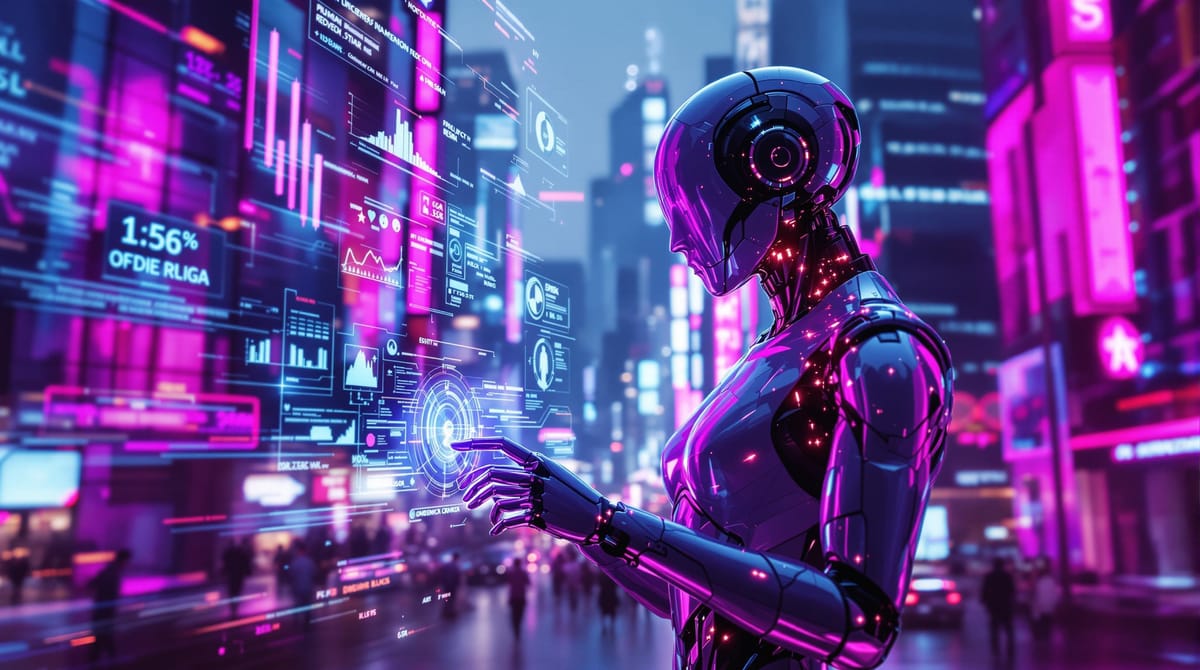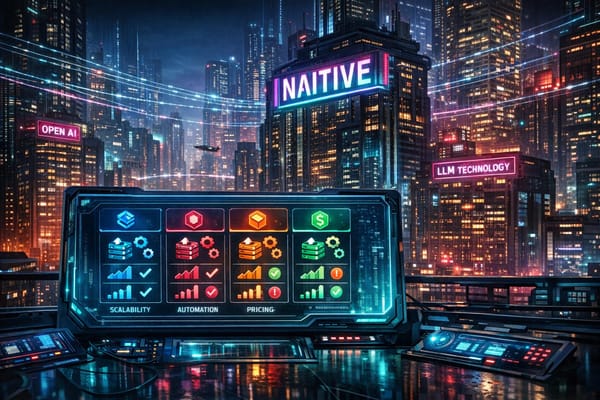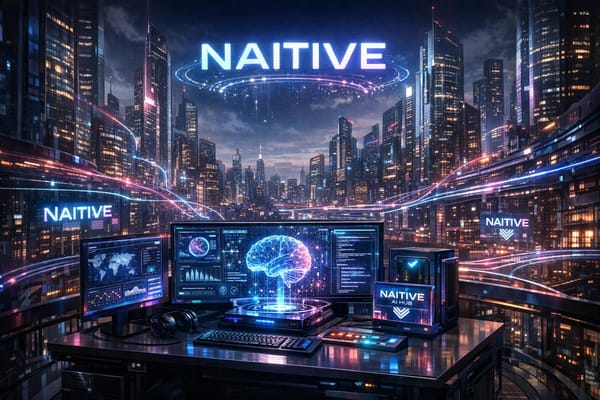AI Agents: A technical introduction
Explore how AI agents are revolutionizing industries through automation, decision-making, and problem-solving with evolving technologies.

AI agents are transforming industries by automating tasks, improving decision-making, and solving complex problems. These systems operate independently, using sensors to gather data, analyze it, and take action toward specific goals. Here's what you need to know:
- What are AI agents? Software systems that observe, analyze, and act autonomously.
- Key applications:
- Healthcare: Faster, more accurate disease diagnosis.
- Automotive: Safer autonomous vehicles.
- Finance: Better fraud detection and risk management.
- Energy: Smarter grid management and renewable integration.
- Types of AI agents:
- Rule-based agents: Follow fixed rules (e.g., IBM's Deep Blue).
- Environment-aware agents: Use stored data to make decisions.
- Self-improving agents: Learn and adapt over time.
- Core components of AI systems:
- Reasoning block: Plans and strategizes.
- Execution block: Implements tasks using tools like APIs and ML models.
- Memory block: Stores data for short- and long-term use.
AI agents are evolving rapidly, with the market projected to grow from $5.1 billion in 2024 to $47.1 billion by 2030. They are expected to contribute $13 trillion to the global economy by 2030, boosting GDP by 1.2% annually. Multi-agent systems (MAS) further enhance collaboration and efficiency, enabling breakthroughs in transportation, manufacturing, and more.
This article explores how AI agents work, their use cases, and the challenges of deploying them effectively.
What Are AI Agents? Artificial Intelligence Agents Explained ...
AI Agent Categories
AI agents come in many forms, ranging from simple systems that follow strict rules to complex frameworks capable of learning and improving over time. Knowing the different types is crucial when choosing an agent for a specific technical task. These categories help guide the design of systems that fit into intricate environments.
Basic Rule-Based Agents
Rule-based agents rely on predefined rules and don't learn from past experiences. They respond to inputs directly, making them suitable for tasks that demand consistent and predictable outcomes.
A well-known example is IBM's Deep Blue, the chess computer that famously defeated Garry Kasparov. It made decisions based on the current board setup, following fixed rules without learning from earlier games.
| Feature | Capability | Use Case |
|---|---|---|
| Input Processing | Direct response to inputs | Game playing |
| Memory Usage | No data storage | Pattern matching |
| Decision Making | Rule-based | Quality control |
| Adaptability | Static responses | Assembly line inspection |
Environment and Goal-Oriented Agents
These agents build an internal model of their environment and use it to pursue specific goals. They combine current input with stored data to make informed decisions. Key traits include:
- Modeling their surroundings
- Making decisions based on objectives
- Using short-term memory for context
Self-Improving and Performance-Based Agents
At the cutting edge, these agents can evaluate their performance and adjust their behavior over time. This makes them ideal for tasks that require flexibility and ongoing improvement.
They are defined by four main qualities:
- Independent decision-making
- Social interaction capabilities
- Responsiveness to environmental changes
- Proactive goal-seeking behavior
These advanced agents are shaping the future of AI by enabling systems to learn and make smarter decisions as they operate.
AI Agent System Design
Modern AI agent systems have moved away from single, unified structures to modular setups, making it easier to connect with various tools and technologies.
Main System Components
AI agent systems are built on three core components that work together seamlessly:
| Component | Primary Function | Key Elements |
|---|---|---|
| Reasoning Block | Strategic planning | Decomposition Layer, Planning Layer, LLM |
| Execution Block | Task implementation | APIs, databases, ML models, web scrapers |
| Memory Block | Information storage | Short-term cache, long-term knowledge base |
The reasoning block acts as the system's decision-making hub, breaking down complex tasks into smaller, actionable steps. As Prashant Kalepu explains: "Reasoning involves understanding the problem and recognizing patterns. It's the cognitive ability that enables the agent to strategize and decide on the best course of action to solve a given task".
The execution block puts plans into action by working with tools like APIs, machine learning models, and databases. This is where theoretical strategies turn into real-world results.
The memory block ensures the system retains important data. It handles both short-term operational details and long-term knowledge, often using vector embeddings for quick and efficient access.
Operation Process
With its modular components, the AI agent operates through a structured workflow. This workflow uses the Reasoning, Execution, and Memory blocks in a three-step process:
-
Initial Planning and Critique
Create an initial plan and refine it through self-review. -
Execution and Adaptation
Carry out tasks while monitoring progress in real-time. Adjust actions as needed. For instance, an electric company's support system might advise, "A 1 kV line typically requires three insulators". -
Performance Evaluation
Assess task accuracy, update the knowledge base, and produce performance metrics.
"Memory allows the agent to retain information over time, storing internal logs of its reasoning process and keeping track of past interactions."
This modular design allows the system to scale and handle increasingly complex problems, transitioning from simple rule-based tasks to advanced problem-solving.
Implementation Examples
These examples showcase how AI agents are being applied across various industries, from improving everyday business processes to tackling more complex challenges.
Business Applications
In healthcare, AI agents are transforming diagnostics. They analyze medical images with precision, spotting subtle details that enhance diagnostic accuracy while keeping human oversight in the loop.
In Pittsburgh, AI-powered traffic systems dynamically adjust signal timings. This real-time optimization improves traffic flow and helps cut down emissions.
Advanced Use Cases
AI isn't just about automating routine tasks - it also excels in handling more sophisticated scenarios by using predictive analytics and multi-agent systems.
For example, in drug discovery, AI analyzes molecular structures and predicts interactions. This approach significantly shortens development timelines and reduces resource demands.
"Ensuring that AI development is aligned with human values and ethical principles is crucial for fostering public trust and maximizing the technology's benefits for society." - RapidInnovation.io
AI also plays a role in chronic disease management. It helps with real-time medication tracking, monitors lifestyle factors, and provides adaptive treatment suggestions to improve patient care.
In manufacturing, AI agents enhance quality control, streamline supply chain management, and enable robots to collaborate more effectively, leading to higher efficiency.
Implementation Requirements and Solutions
To deploy AI agents successfully, you need to address both the technical infrastructure and ethical considerations.
Technical and Ethical Challenges
Building reliable AI systems means tackling some key issues. Data security is a top priority, requiring strong encryption and secure communication channels. Implementing Role-Based Access Control (RBAC) can help manage access to sensitive data and protect AI models from potential threats.
AI agents also demand significant processing power and memory. Here are some ways to meet these needs:
- Use GPU acceleration to boost processing speed
- Take advantage of cloud resources for scalability
- Incorporate edge computing to reduce latency
- Manage memory efficiently with dynamic allocation
Additionally, ensure API standardization to integrate legacy systems with modern AI tools seamlessly.
Deployment Framework
Here's a structured approach to tackle these challenges:
-
Infrastructure Planning
Build a solid foundation by using load balancing, allocating resources effectively, setting up redundant systems, and leveraging cloud scalability. -
Security Measures
Protect data with encryption (both in transit and at rest), implement strong authentication protocols, use firewalls, deploy intrusion detection systems, and conduct regular security audits. -
Performance Enhancements
Speed up responsiveness and minimize latency with techniques like asynchronous processing, caching, model compression, and better memory management. -
Monitoring and Maintenance
Regularly track system performance, including response times, error rates, resource usage, and AI model accuracy, to ensure smooth operations and quick issue resolution. -
Ethical Practices
Address ethical concerns by tackling bias and ensuring fairness in AI systems. This includes auditing decision-making processes, maintaining transparency, using privacy-preserving methods like differential privacy, and complying with laws such as GDPR and CCPA.
Next Generation AI Agents
AI agents are transforming how systems operate and interact, with the market poised for rapid growth. Forecasts predict the sector will grow from $5.1 billion in 2024 to $47.1 billion by 2030. Let’s take a closer look at how multi-agent systems are reshaping coordination and efficiency.
Group Agent Systems
Multi-agent systems (MAS) allow multiple AI agents to collaborate on complex tasks, bringing significant improvements to various industries. Examples include:
- Transportation Networks: Managing traffic flow and optimizing routes
- Robotic Operations: Streamlining warehouse tasks and manufacturing processes
- Social Network Analysis: Identifying patterns and predicting trends
Researchers at MIT are advancing these systems to improve reliability in challenging environments like robotic warehouses. MAS offer several benefits, such as:
- Solving problems through distributed efforts
- Maintaining operations even if some agents fail
- Scaling workloads dynamically
- Sharing knowledge across the network
These collaborative systems are paving the way for new applications, including the integration of advanced language processing tools.
New Technology Integration
Enhanced language processing is boosting how AI agents interact and perform tasks. A collaboration between Google and Stanford has developed a method to create AI replicas of individuals using just two hours of interview data.
New technology integration focuses on improving efficiency through better model optimization, smarter resource use, and quicker learning cycles. It also enhances natural language processing, enabling agents to:
- Understand nuanced contexts
- Handle complex queries
- Generate more accurate responses
For instance, in manufacturing, groups of AI agents can manage intricate assembly processes while seamlessly communicating with human operators. These advancements are pushing the boundaries of human-machine collaboration and autonomous operations, driving progress in both areas.
Summary
AI agents are reshaping technology by enabling autonomous and advanced problem-solving. The market is expected to grow significantly, from $5.1 billion in 2024 to $47.1 billion by 2030, reflecting their growing role in various industries.
These systems have shown wide-ranging applications. They’re being used to improve healthcare diagnostics and make energy distribution more efficient, demonstrating their usefulness across different fields.
AI agents have evolved from rule-based systems to self-learning models, making them essential tools for businesses. They excel at performing repetitive tasks with high accuracy and can now handle more complex decision-making processes.
Multi-agent systems, discussed earlier, represent a major step forward. These allow for more advanced collaborative operations, further enhancing their effectiveness in diverse sectors.
Looking ahead, AI agents are projected to add $13 trillion to the global economy by 2030, potentially boosting global GDP by 1.2% annually. Advances in training methods and natural language processing will make them even more integral to modern technology systems.




